Step into the magnificent Cenacolo Palladiano for an encounter with eight truly meaningful objects, the expression of the creativity and craftsmanship of some of Europe’s finest designers and artisans. Specially commissioned for Homo Faber, each object is the product of the imagination of a world-class international designer working in collaboration with an artisan specialised in specific materials or techniques in a particular part of Europe. Briefed by renowned Italian architect Michele De Lucchi, each pair created an object with an interior inspired by the spiritual notion of the tabernacle, a residence or dwelling place. The result is eight very different objects which nevertheless share a single aim: to tell a story by using the hands of the artisan to translate the imagination of the designer into shape and form.
Discover the catalogue
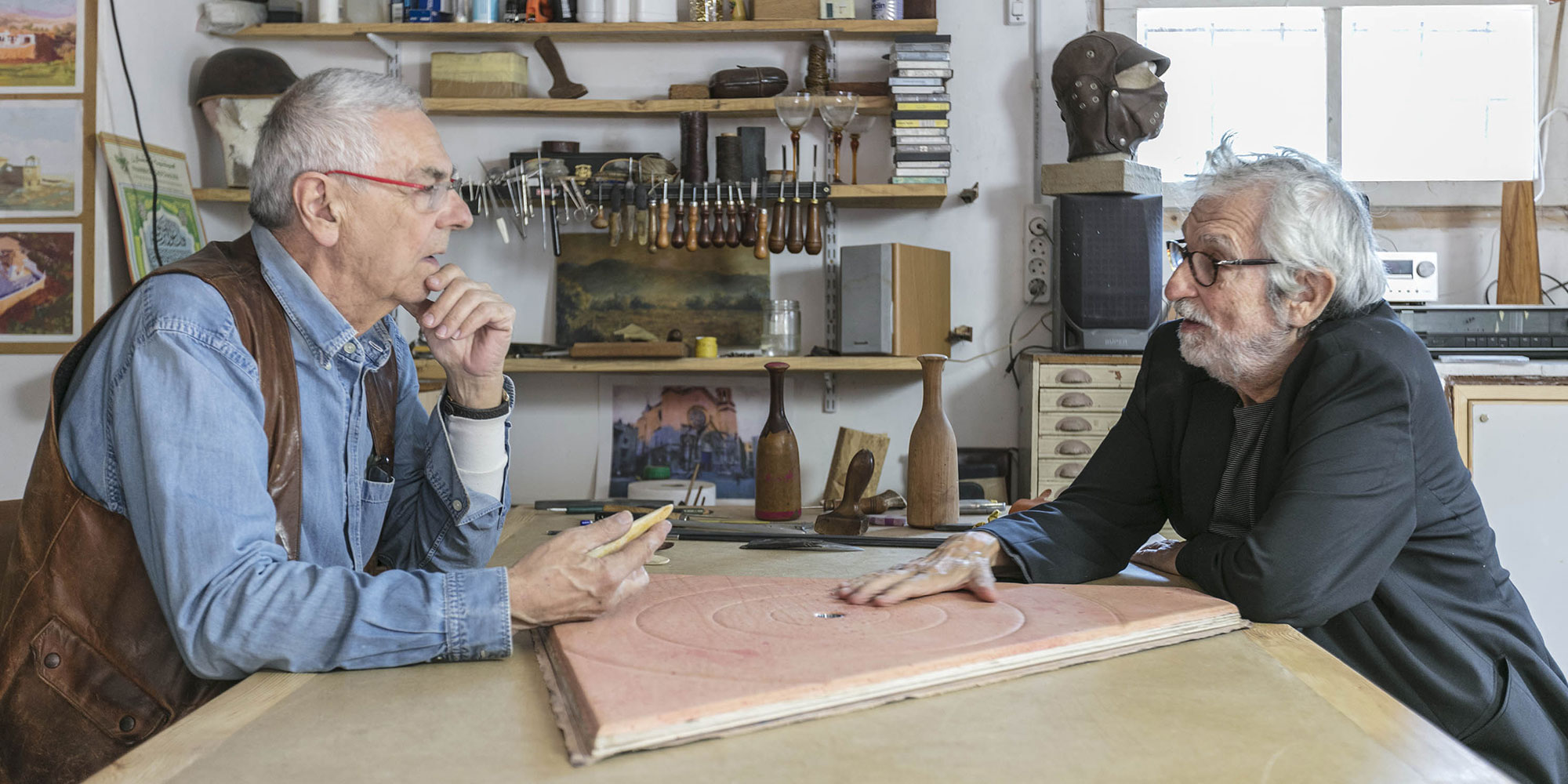
Discover how each collaboration pushed both artisan and designer to apply their knowledge in new and exciting ways. See how an innovative Dutch product designer harnessed the skills of a Delftware porcelain painter, and admire the result of a Swiss designer’s encounter with a talented woodcarver trained in the now rare Weissküfer technique. Gain a unique insight into this collaborative process through eight short films by filmmaker Emanuele Zamponi which take you inside and around the artisan’s workshop. Witness the process of creation, the relationship between artisan and designer, and the geographic influences that set each exceptional object apart from another.
Räss is a master of the traditional Swiss technique of Weissküfer, in which wood is bent and shaped to make equipment for dairy farmers. Zurich-based designer Häberli set out to create a structure that would harness this technique but challenge Räss to push his skills to the limit.
Munich-based lighting designer Maurer wanted to showcase the skills of his regular collaborators. His metal egg was pounded into shape by young craftsmen at Deggelmann’s artisanal metalwork company Martelleria, before the interior was painted by pigment expert Lehmann.
Lowe, the British director of Factum Arte, used his cabinet in casted salt to showcase the incredible work of artisans at his Madrid-based company, which merges digital technology with craftsmanship to create and recreate stunning works of art.
Tusquets Blanca’s design for a leather pyramid harnessed the skills of master leatherworker and saddlemaker Ventura Sala, who combines traditional and digital techniques to make exceptional objects in his Catalonia workshop.
Paris-based Sierakowski drew on the skills of contemporary artists and artisans of his Polish homeland to create a wooden drinks cabinet with marquetry inlay. Collaborating closely with two carpenters and a figurative painter, his vision evolved as they discussed the best solutions for the project together.
Architect and designer La Pietra designed a cabin-like structure to showcase the incredible skills of Italian mosaic master Candussio, who works with hard and semi-precious stones gathered around his Spilimbergo home and further afield.
Innovative Dutch product designer Wanders teamed up with a renowned producer of Delft Blue pottery for his object, creating a thoroughly contemporary vase for master artisan Plaisier to paint in the traditional Delfts Blue style.
Monié and Cesses are master gold leaf artisans from the south of France. Regular collaborator Bedin imagined a tabernacle that would reveal the beautiful colour variations in gold leaf, bringing movement to the object as it catches the light.
Intriguing, unusual, beautiful, each of these eight objects pays homage to materials and techniques used by artisans working around Europe today, from gold leaf in France to hard stone mosaic in Italy and leather in Spain. Viewed together as a collection, they reflect the diversity of artisanal and design skill in contemporary Europe and the fruitful dialogue between them. As you explore these wonderful objects, each dramatically lit from within and above and mounted on a pedestal, you’ll discover how long-held artisanal techniques can be influenced and improved by contemporary innovations, and vice versa.
This wooden cabin is covered externally by rough marble and stone mosaic, with a contrasting interior of polished golden stone.
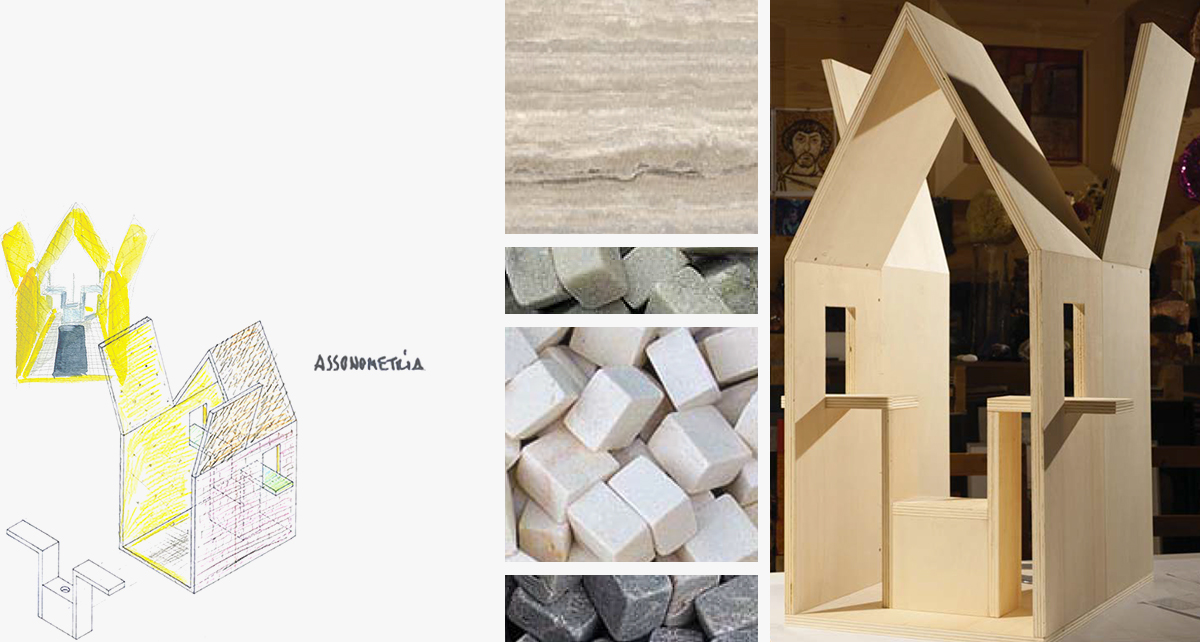
This leather pyramid has a coarse exterior and a delicate interior, with light projected from below through a pattern of small holes in the leather.
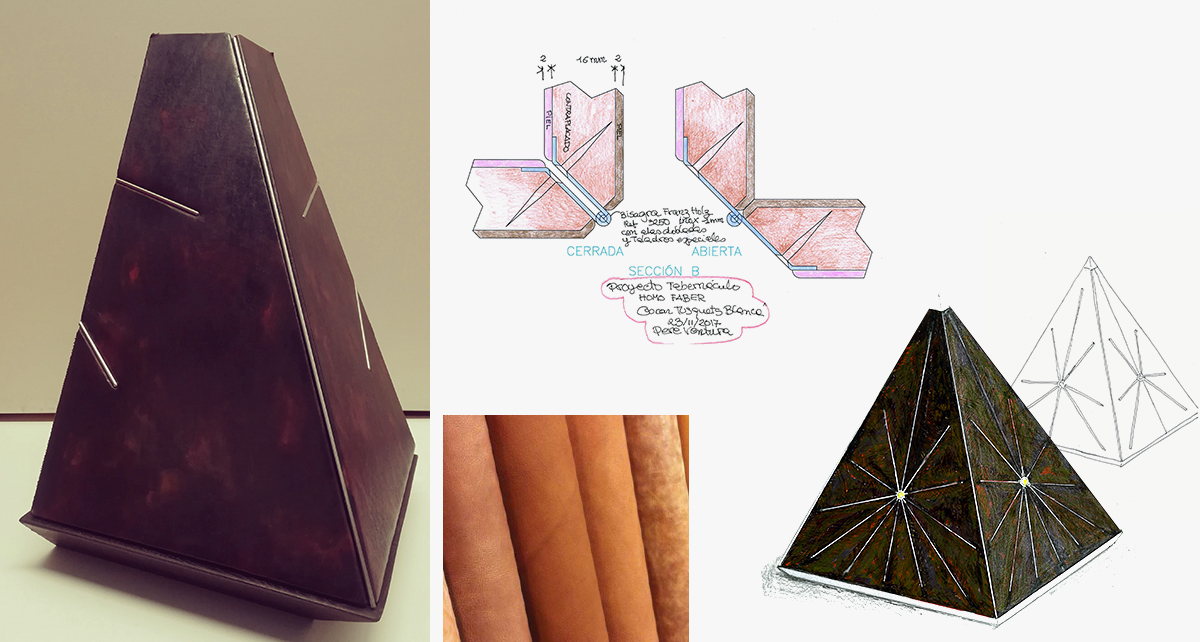
This drinks cabinet has a marquetry inlay in two types of exotic wood and its exterior is painted in a swirling blue style evoking the natural pattern of malachite.
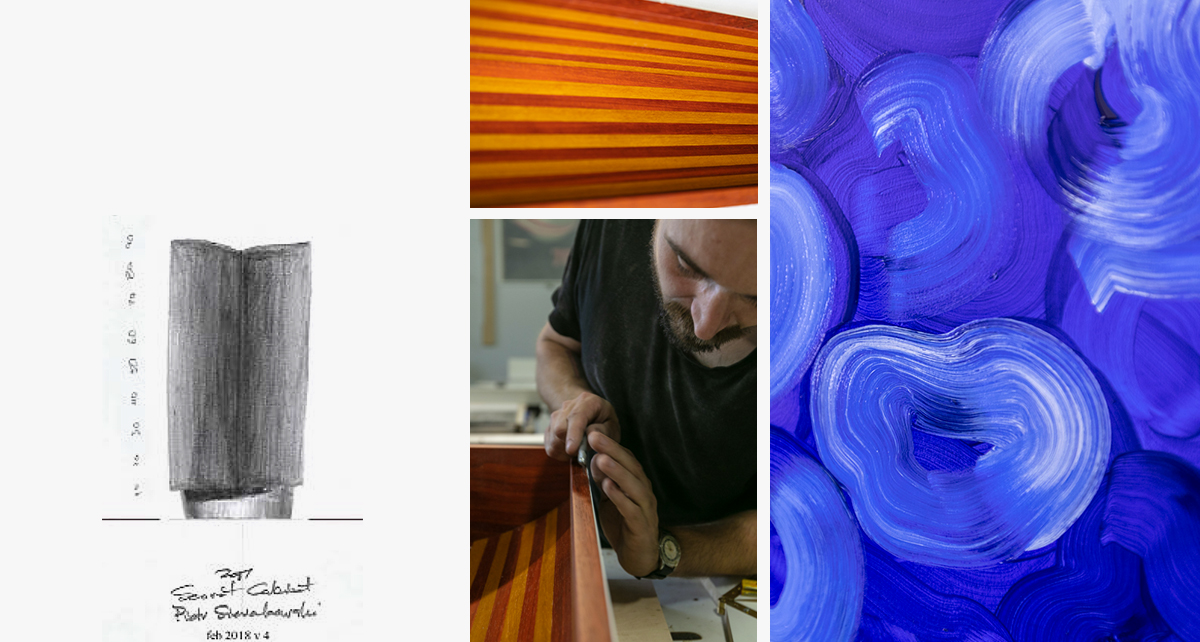
Artisan: Giulio Candussio
Designer: Martine Bedin
Artisan: Dominique Monié & Jean-Luc Cesses
Designer: Adam Lowe
Artisan: Factum Arte
Designer: Alfredo Häberli
Artisan: Roman Räss
Designer: Ingo Maurer
Artisan: Martin Deggelmann & Enno Lehmann
Designer: Piotr Sierakowski
Artisan: Andrzej Dobrowolanski & Jakub Przyborowski with Pola Dwurnik
Designer: Oscar Tusquets Blanca
Artisan: Pere Ventura Sala
Designer: Marcel Wanders
Artisan: Wilma Plaisier
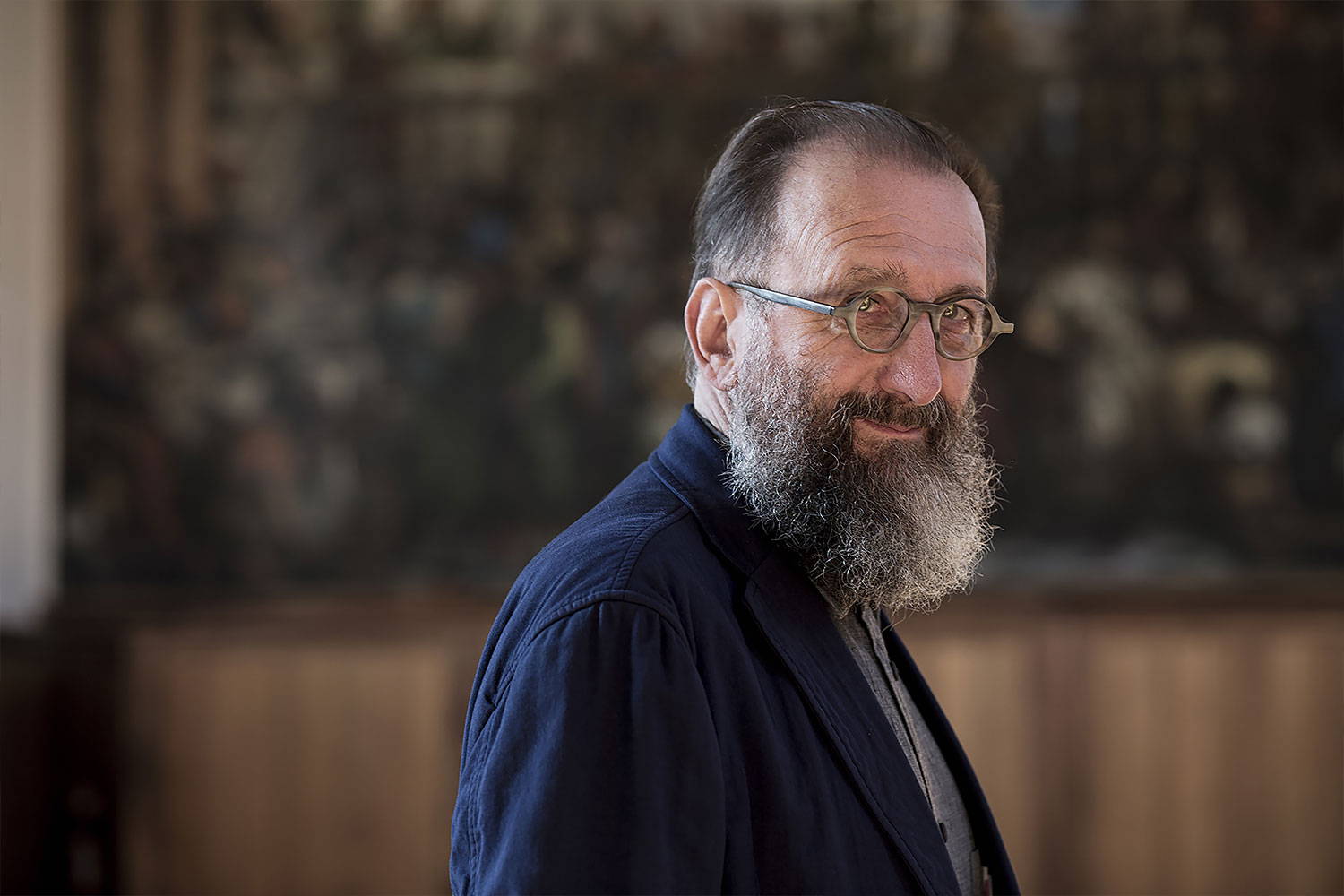
Michele De Lucchi has designed furniture and lighting for most well known Italian and European companies including Artemide, Alias, Unifor, Hermès, Alessi and Olivetti. His architectural work spans residential, industrial, cultural and corporate spaces in Italy and around the world. Alongside his professional work he has always pursued a personal exploration of design and craftsmanship, and in 1990 he founded Produzione Privata, an experimental laboratory through which he creates imaginative products using artisanal techniques. Among his numerous awards and accolades, he was appointed Officer of the Italian Republic in 2000 for services to design and architecture. He is editor in chief of the Domus magazine for the whole of 2018
 Michelangelo Foundation
Michelangelo Foundation Homo Faber Event
Homo Faber Event

